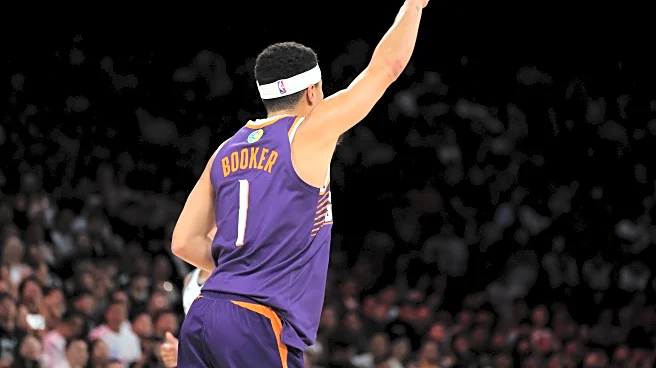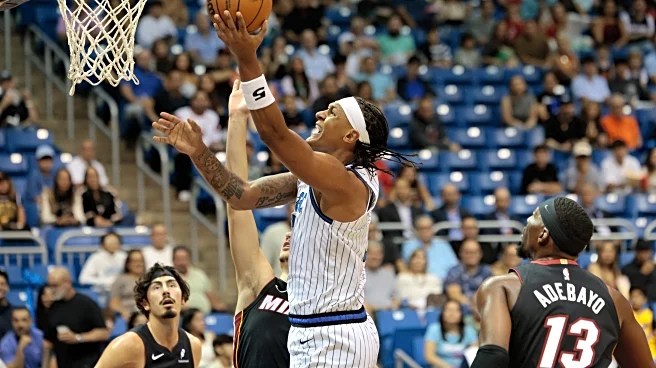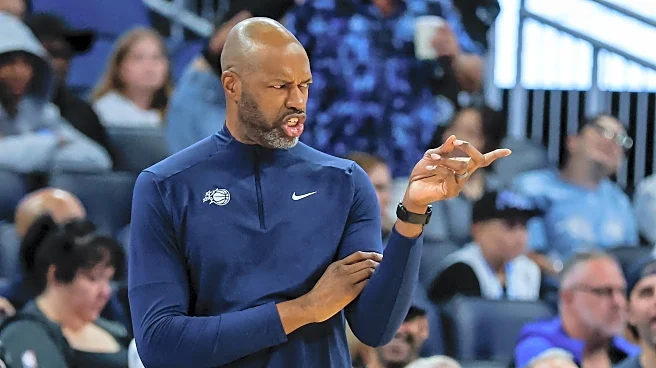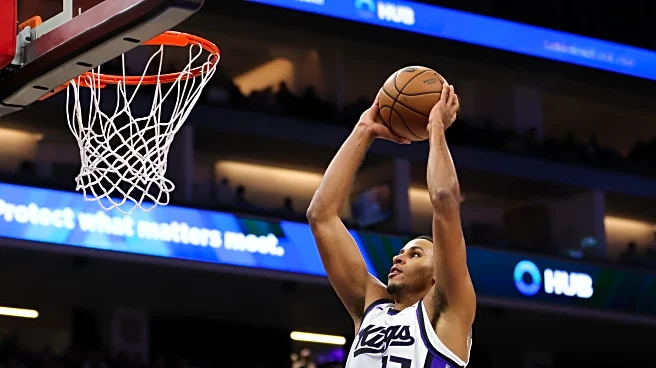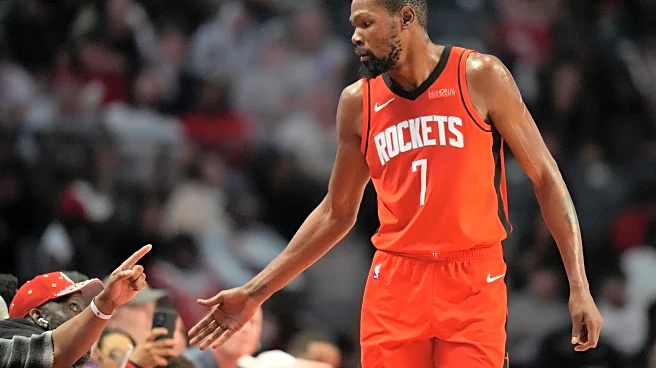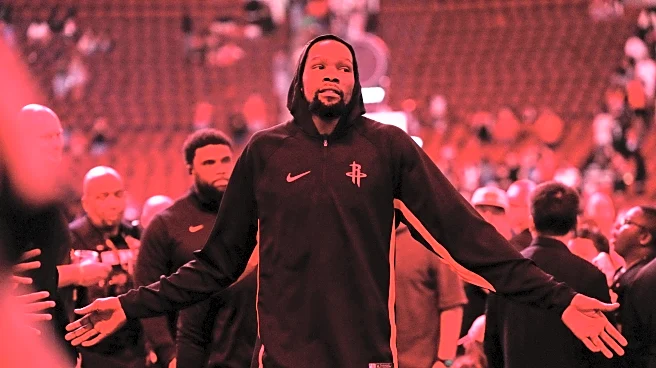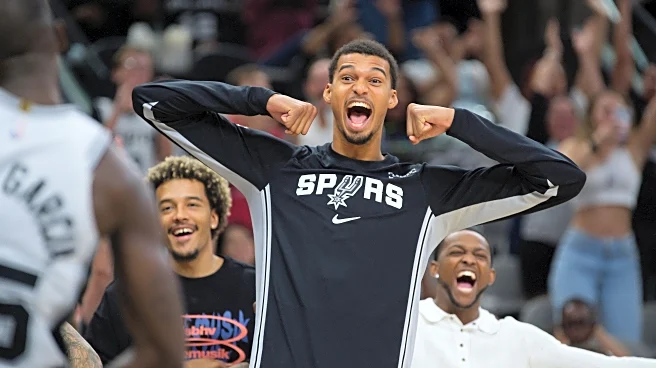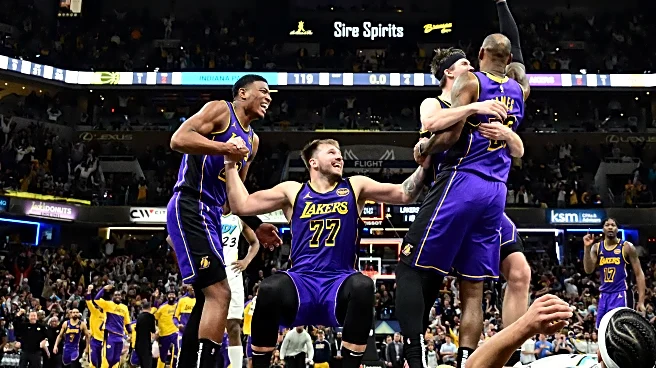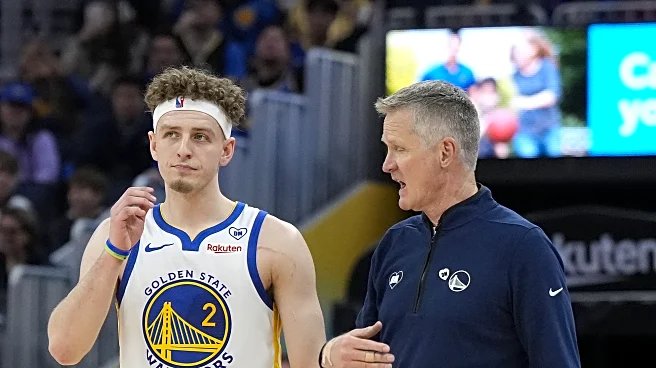Let’s talk about how insane it is that ESPN is running computer-generated artificial intelligence simulations to crown champions before a single ball gets dribbled for the 2024-25 regular season. This
is sacred territory. This belongs to your granddad gesticulating wildly over the grill at your nephew’s third birthday as Pop Pop can’t understand why you’d ever believe Steph Curry could win more rings than LeBron James. This is the domain of that loud guy next to you in the bar wearing the faded Rick Barry jersey. This is Skip Bayless and Shannon Sharpe ready to come to blows on live television over arguments that have zero statistical backing and 100% emotional investment.
Shouldn’t we be using artificial intelligence to plot out actual doomsday scenarios? To figure out why the price of onion rings at Burger King has gone up 47% over the last 15 years? To solve metropolitan traffic or cure diseases or at least explain why my Netflix algorithm thinks I want to watch reality shows about people flipping houses in Montana?
THE BIG QUESTIONS, people.
But then I read deeper into Kevin Pelton’s simulation No. 620 of the 2025-26 NBA season, and suddenly everything changes.
The simulation has the Warriors winning the West.
Wait, Maybe Skynet Isn’t So Bad
Hold on. Let me re-read that. The unbiased, emotionless, purely mathematical artificial intelligence system looked at all the data, processed every variable, calculated every possible outcome, and concluded that the Golden State Warriors would dominate the Western Conference.
Here is where I start glowing about the wonderful ways that AI is unbiased and can see through all the emotional shenanigans that blind rival fanbases. Maybe those Terminator movies got it wrong. Maybe when the machines take over, they’ll just run the league more efficiently and finally give us the respect we deserve. Maybe Skynet isn’t so bad after all.
The simulation starts exactly where any rational basketball analysis should begin: with Golden State demolishing the Lakers on opening night, 107-99, spoiling Luka Doncic’s first home opener in purple and gold. The algorithm recognized that putting Doncic in Lakers purple was always going to be a disaster, and it took less than one simulated game to prove it.
Draymond Green vowed afterward that the Warriors, not Oklahoma City, should be considered the title favorites. In this simulated reality, he wasn’t just talking. He was prophesying truth that only a perfectly calibrated algorithm could recognize.
By Christmas Day, the Warriors sit at 20-7, leading the entire Western Conference. This isn’t fluky variance or the kind of hot shooting that regresses to the mean by February. The simulation recognizes what the advanced metrics have shown all along: when this core is healthy and engaged, they remain the West’s most dangerous team. The algorithm sees championship DNA where human analysts see age and decline.
The Numbers Don’t Lie (And Neither Do Robots)
The All-Star break paints an even sharper picture. Golden State enters at 42-13, the league’s best record in the entire NBA. Green and Jimmy Butler III join Curry on the West roster. The simulation notes that “the Warriors were the talk of the league” with Oklahoma City sitting 4.5 games back, probably wondering how their defending championship team got left in the dust by a franchise that everyone kept saying was past their prime.
Then comes the regular season finish: 63 wins. The Warriors close on a 10-game winning streak, reaching their highest win total since 2016-17 when they went 67-15. That was the year after the 73-win campaign, when Kevin Durant joined and they steamrolled to the title. This simulated version reaches similar heights through pure competitive execution and a roster construction that the AI recognizes as historically elite.
That 63-win projection isn’t pulled from thin air. It’s based on net rating projections, strength of schedule calculations, injury probability models, and offensive-defensive efficiency metrics that account for every possession. The simulation sees what too many analysts overlook: elite coaching doesn’t evaporate, championship experience compounds rather than diminishes, and a system that maximizes talent doesn’t stop working just because the calendar changes.
The algorithm has spoken, and the algorithm is wise.
The Playoff Run: When Machines Understand Glory
The postseason unfolds like a masterclass in championship basketball. Golden State dismantles Sacramento 4-1 in Round 1, handling the play-in survivor exactly as the top seed should. The Kings came in hoping their overtime play-in victory over the Timberwolves would carry momentum. The Warriors reminded them that momentum is a myth when facing superior talent and execution.
The Clippers series goes six games, described as “a battle of the NBA’s two oldest rosters.” The simulation recognizes that in playoff basketball, experience becomes the ultimate weapon. When the game slows down in the halfcourt, when defensive rotations tighten, when every possession carries championship weight, the team that’s been there before holds the decisive advantage. Golden State wins 4-2 because the algorithm understands what casual observers miss: age is only a limitation if you let it be.
But the Conference Finals against Oklahoma City? This is where the simulation captures the essence of what makes Warriors playoff basketball inevitable. The Thunder, young and talented and defending champions in this timeline, push Golden State to six games. The series features everything you’d want: competitive games, star performances, coaching adjustments that matter. Yet the Warriors close it out on the road, in Oklahoma City, taking the Thunder’s crowd, their momentum, their hope, and methodically dismantling it through championship execution honed over a decade of Finals runs.
The simulation frames it perfectly: “in a battle of the NBA’s last dynasty against a team aspiring to become one, the Warriors lived up to Green’s seasonlong hype.” The AI recognizes something profound here. Dynasties aren’t built on potential or youth or exciting upside. They’re built on delivering when the pressure reaches nuclear levels, on making the right play in the right moment, on having Curry calmly drain a transition three to ice a Game 6 on the road while 18,000 Thunder fans watch their season end.
Through this entire playoff run, the simulation projects exactly the brand of championship basketball that has defined Golden State’s era. Efficient halfcourt offense that generates quality looks. Defensive rotations that turn good shots into great contests. Curry creating gravity that opens everything. Green orchestrating defensive chaos. The algorithm sees the interconnected brilliance that makes this system work.
I’m starting to think we should let AI run more things. Traffic lights. The DMV. Maybe even sports talk radio, though that might put some people out of work. But if artificial intelligence can recognize Warriors greatness this clearly, maybe we’ve been too harsh on our robot overlords.
Then The Algorithm Commits an Unforgivable Crime
And then I get to the Finals results.
Game 7 at Chase Center. The Warriors lose to the Orlando Magic.
Wait.
What?
THE ORLANDO MAGIC?
Let me say that again so the full absurdity can marinate: the Orlando Magic beat the Golden State Warriors in Game 7 of the NBA Finals at Chase Center. The Magic, who haven’t won a championship in franchise history. The Magic, whose last Finals appearance was 2009. The Magic, who in this simulation just randomly decided to become world-beaters.
Is this 1995? Did Penny Hardaway and Shaquille O’Neal step through a time portal? Did the simulation accidentally swap rosters with NBA Jam Tournament Edition?
The simulation notes that Curry was “playing through a minor injury by the end of the season” and “the Warriors’ potent offense operated at less than full strength.” Oh, so now the algorithm wants to make excuses? Now it wants to factor in injury variance and random chance? The same AI that confidently projected 63 wins suddenly develops a conscience about competitive balance? Did Steph twist his ankle on a freaking Lil’ Penny doll?!
It describes the loss as similar to the 2016 Game 7 defeat to Cleveland, which means this algorithm woke up one morning, surveyed all possible outcomes, and actively chose violence. It looked at thousands of potential narratives and decided: you know what would be fun? Let’s give Warriors fans championship-level hope and then rip it away in the most painful manner possible. Let’s make them relive 2016 but with Paolo Banchero instead of LeBron James.
Just like AI trying to generate a photo of a human hand and producing six fingers, or creating deepfakes of dead celebrities joining the WWE, or writing recipe instructions that tell you to add glue to pizza sauce, AI reveals itself as fundamentally broken. It’s an abomination that should only be used for entertainment purposes at best, and even then under strict supervision.
Paolo Banchero drops 32 points in Game 7 and wins Finals MVP. Franz Wagner averages 22 points, 8 rebounds and 5 assists in the series while defending Butler. The Magic capture their first championship barely a year after upgrading their lineup with Desmond Bane. Banchero credits the victory to “620” on the podium, which observers interpret as a remix of his native 206 area code, but which really stands as a monument to how even computer simulations can craft narratives specifically designed to cause maximum emotional damage.
The Truth About Artificial Intelligence
So what have we learned from simulation No. 620?
We’ve learned that AI is only as good as its programming, and clearly someone at ESPN forgot to code in the most important variable: championship inevitability when Curry has the ball in Game 7. We’ve learned that algorithms can process millions of data points but somehow miss the fundamental truth that the Warriors don’t lose at home in elimination games when everything’s on the line. We’ve learned that artificial intelligence might be able to beat humans at chess and Go and Jeopardy, but it fundamentally misunderstands basketball.
The simulation gets so much right. The 63-win regular season based on elite net rating projections and offensive efficiency metrics. The dominant playoff run through the West built on championship execution and defensive versatility. The Conference Finals victory over Oklahoma City showcasing experience over youth. All of that tracks with every advanced statistical model and every piece of historical championship data.
But then it faceplants at the finish line by having the Magic, of all teams, win Game 7 at Chase Center. It’s like watching a PhD dissertation that’s brilliant for 200 pages and then concludes with “and that’s why the Earth is flat.”
The beautiful thing about simulations is they remind us that the future remains unwritten. Computer models can crunch numbers until the processors melt, but they can’t account for human will. They can’t measure what happens when Curry refuses to let his team lose. They can’t quantify what Green brings to a Game 7 with everything on the line. They can’t factor in the roar of the Chase Center crowd or the weight of championship banners hanging in the rafters or the collective determination of a franchise that’s spent a decade proving doubters wrong.
At least until they fix the algorithm to show the Warriors winning, at which point I’ll be back on board with our benevolent robot overlords and their perfectly calculated basketball futures.
Simulation No. 620 shows us a version that almost captures another championship. But “almost” doesn’t hang banners. “Almost” doesn’t get your number retired. “Almost” is what happens when you let computers write basketball destiny instead of letting champions create it.
The real version of 2025-26? That story hasn’t been written yet. And unlike artificial intelligence with its flawed Finals projections, we get to watch it unfold where every possession matters, every shot counts, and where greatness isn’t simulated but earned through blood, sweat, and Curry pulling up from 35 feet in crunch time.
The robots might dream of Warriors glory. But we get to demand they fix their code until those dreams match reality.
This article has been paid for in part by Cyberdyne Systems.


